After a very nice walk and a coffee break in the place called Rumeli Hisari, we took a bus to get to the vicinity of the Dolmabahçe Palace that was the next place my friend Sneža and I planned to visit.
This is a palace that was built on the European shore of the Bosphorus around the middle of the 19th century at the order of Sultan Abdülmecid I. When the palace was finished, the sultan moved in from the Topkapi Palace with his entire family. In this way, this palace became the new home of Ottoman sultans and with a short break of 20 years it continued this way until 1922 when the Ottoman sultanate was abolished. After the declaration of the Turkish republic and the nationalisation of the palace, President Mustafa Kemal Atatürk used the palace as his summer residence and this is where he passed away in 1938. Today, this is a museum.
 Gate used to enter the Dolmabahçe Palace
Gate used to enter the Dolmabahçe Palace
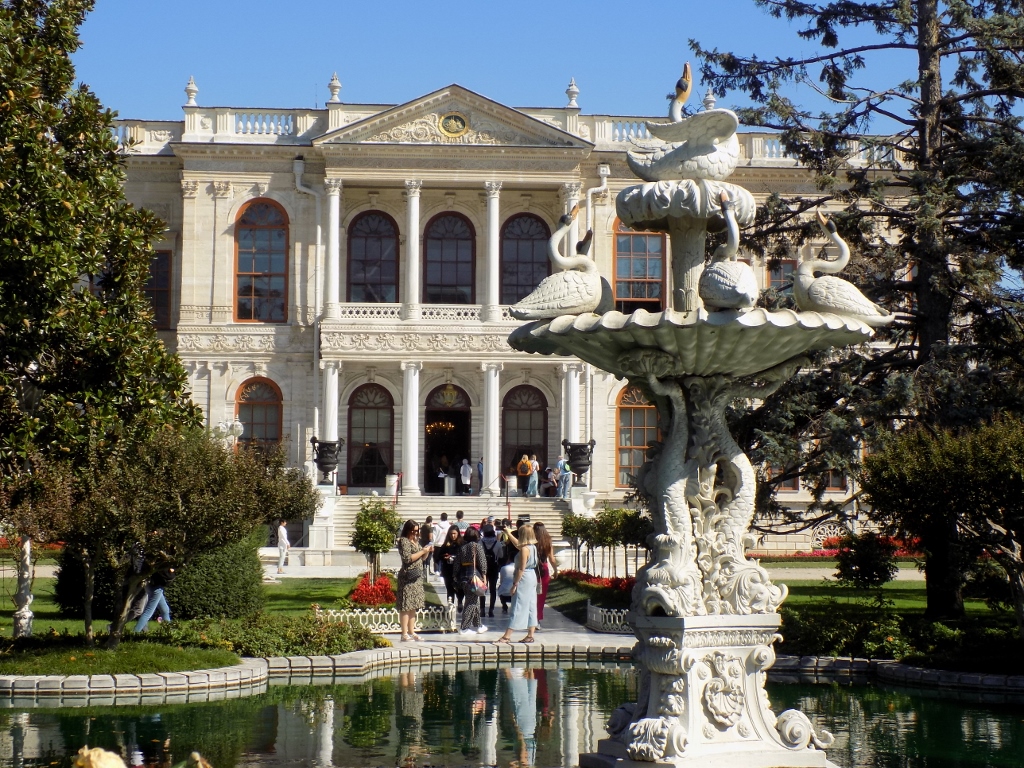 Access to the Dolmabahçe Palace
Access to the Dolmabahçe Palace
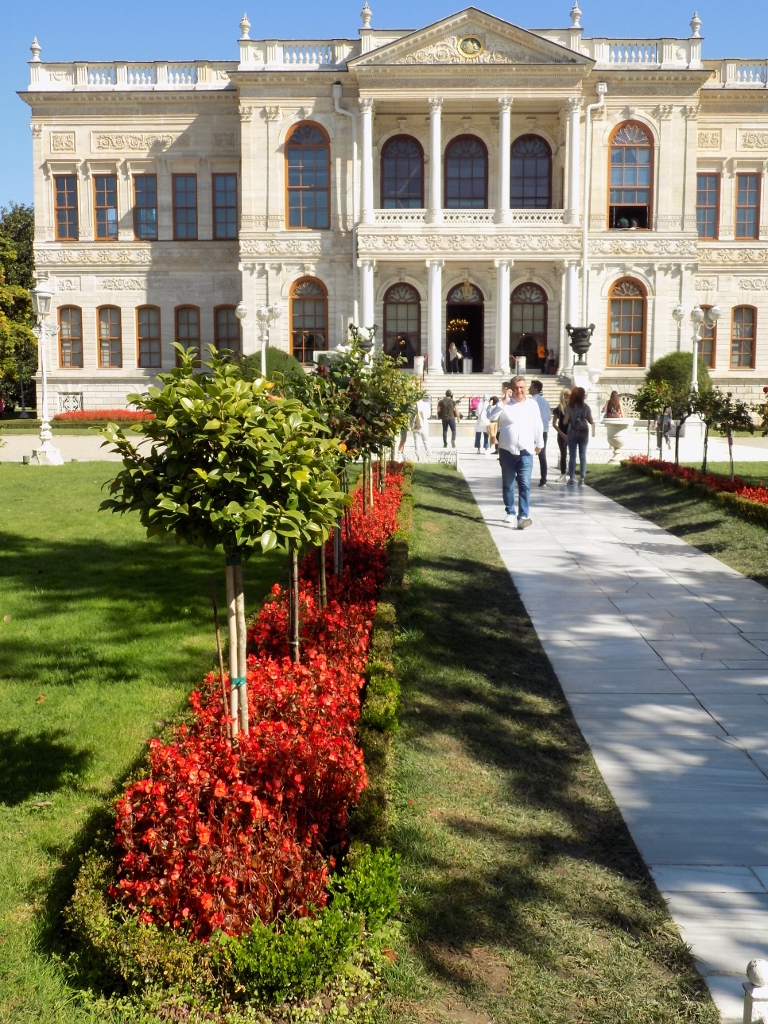 Access to the Dolmabahçe Palace
Access to the Dolmabahçe Palace
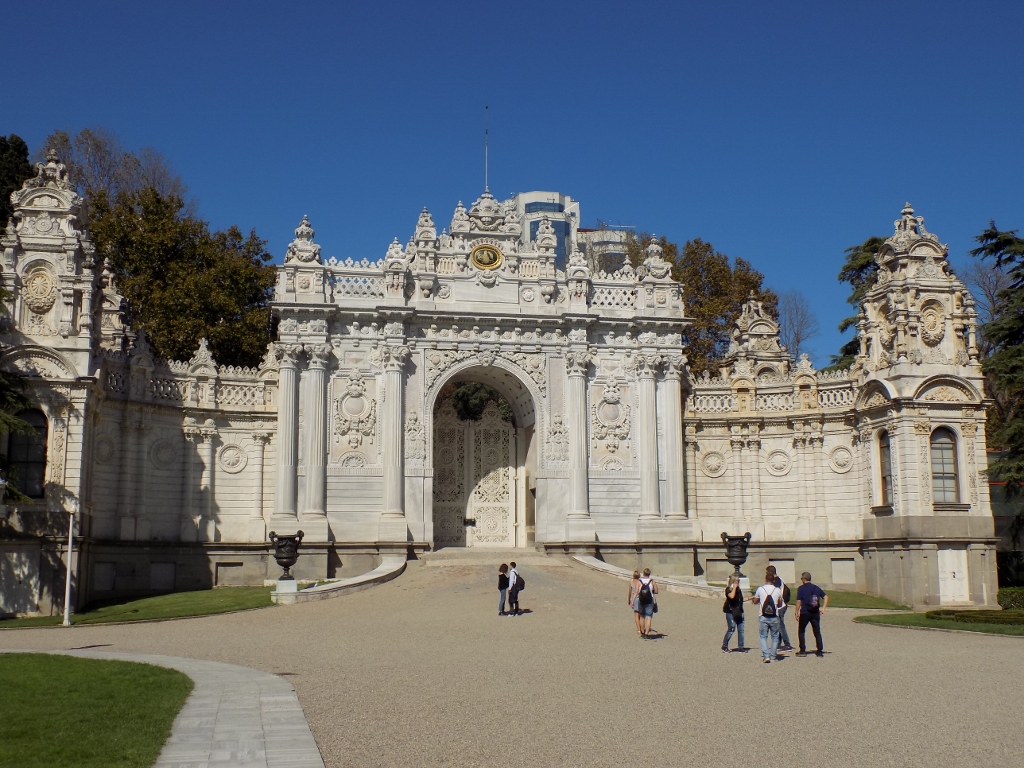 Richly decorated side gate that leads into the forecourt of the Dolmabahçe Palace
Richly decorated side gate that leads into the forecourt of the Dolmabahçe Palace
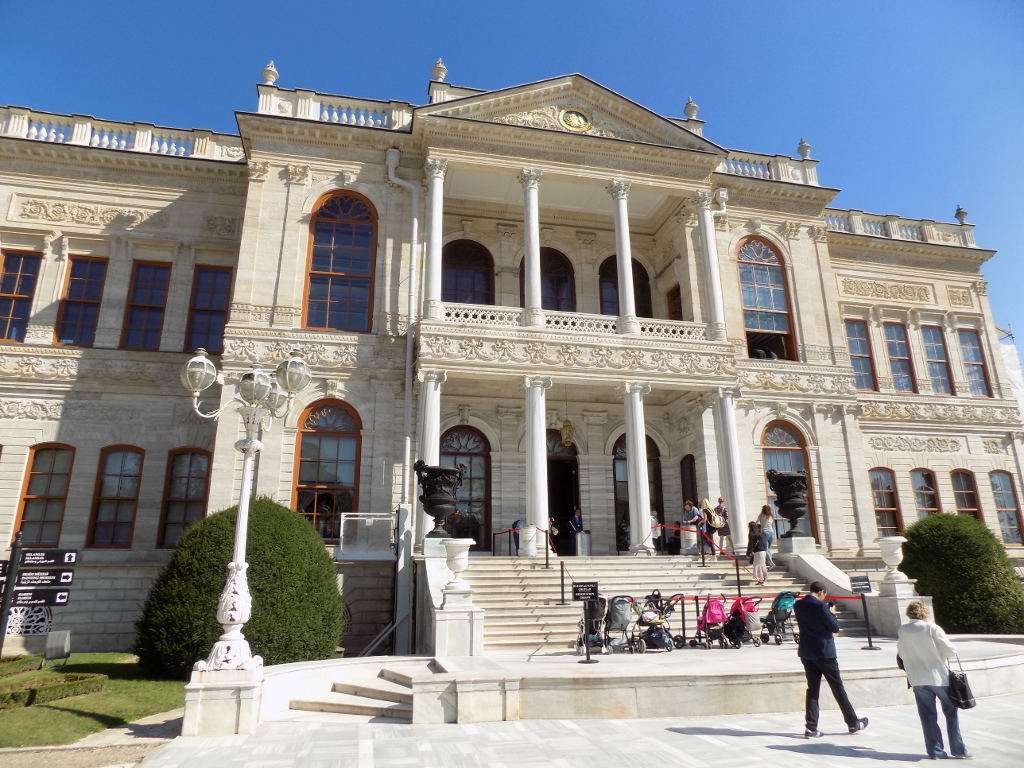 Main entrance into the Dolmabahçe Palace
Main entrance into the Dolmabahçe Palace
The building of this lavish palace the purpose of which was to bring in the spirit of modern times and European influences was exceptionally costly and only contributed to the financial demise of the Ottoman Empire that ensued a couple of decades after the completion of the construction. This is the life in the world of big figures and people in the positions of power. The sultan who ordered the construction of this palace died well before the debts became due for collection, so this was no longer his worry. The same thing happens to us today, different politicians elected for only a few years keep signing left and right all sorts of loans which are to be paid off in the decades to come by people who were not involved in the negotiations about these loans at all, often well after those who first signed them no longer hold any office or perhaps have already passed away. Am I the only one to whom this does not make much sense? Why aren’t loans given only for the period that coincides with the mandate of those who negotiate them and sign them, so if they fail to pay them back, then at least everybody knows who’s to blame? They did their job poorly and then they should be directly held accountable for that.
Be as it may, the two of us spent a couple of hours walking around this palace admiring, more or less, different details, but none of that will be seen in this story, simply because inside it is not permitted to take photos. Still, the following photograph shows the entire Dolmabahçe Palace on the shore of the Bosphorus as we looked at it while transferring by ferry a little later to the Asian side and the Üsküdar quarter.
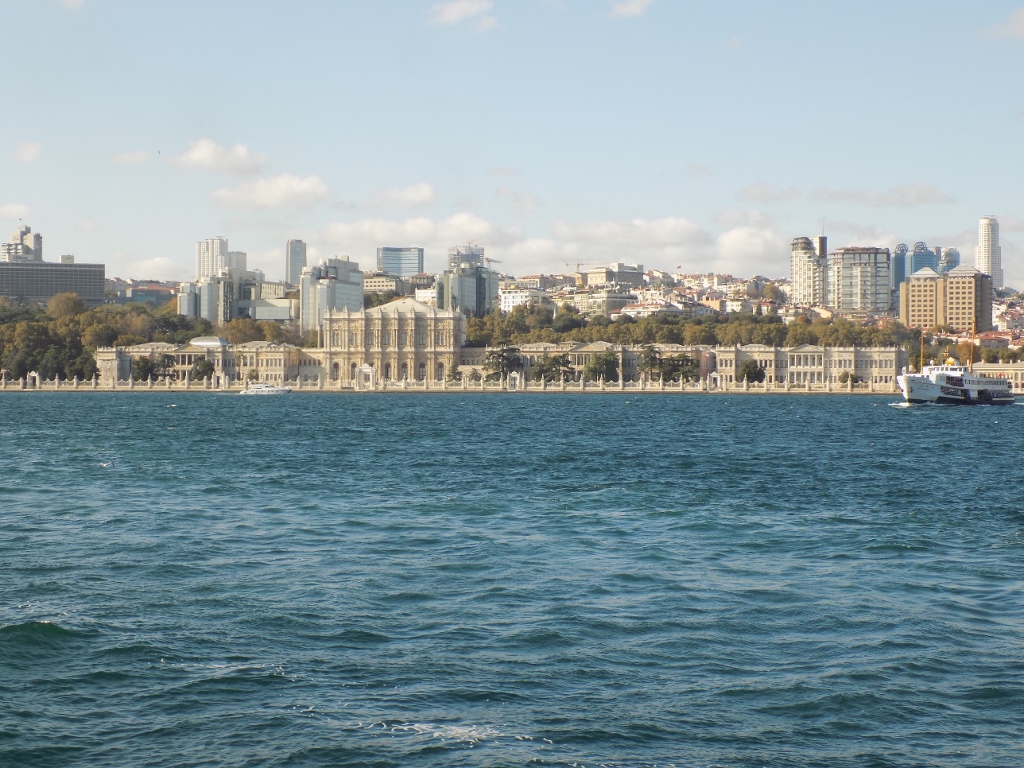 Dolmabahçe Palace on the shore of the Bosphorus
Dolmabahçe Palace on the shore of the Bosphorus
On the opposite shore to which we were heading, we could see, also from the ferry, a couple of other buildings that we were particularly interested in. These were the Mihrimah Sultan Mosque and the Şemsi Pasha Mosque. They were both designed by Mimar Sinan (who else?), that fantastic, prolific Ottoman architect from the 16th century.
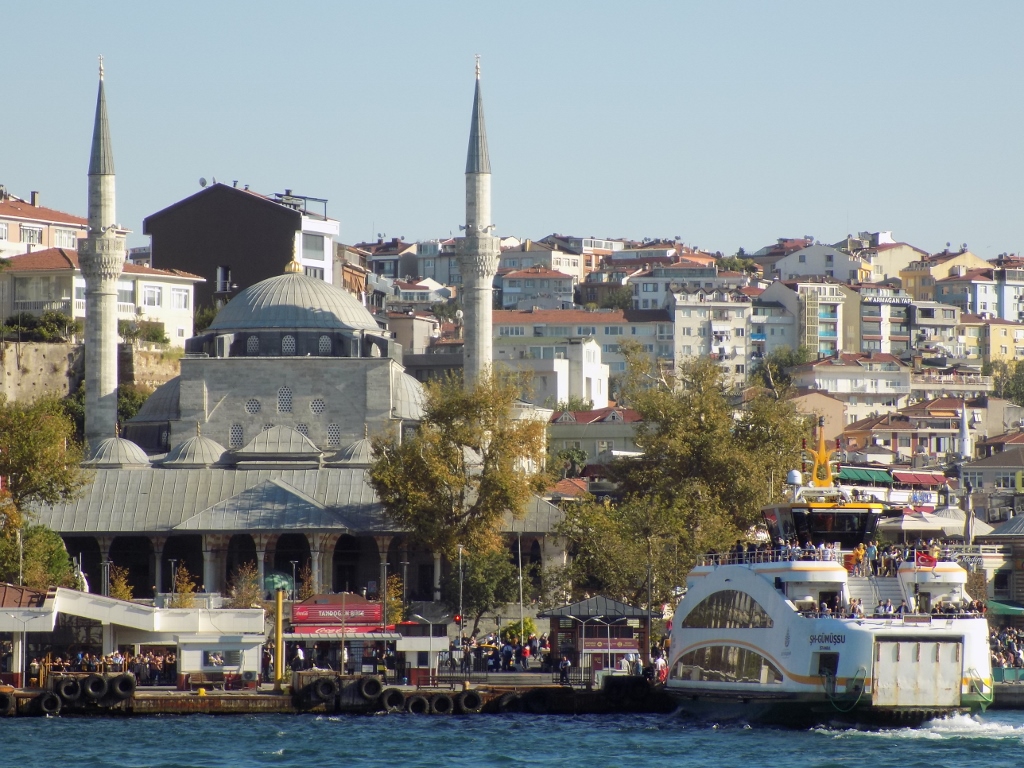 Mihrimah Sultan Mosque in Üsküdar
Mihrimah Sultan Mosque in Üsküdar
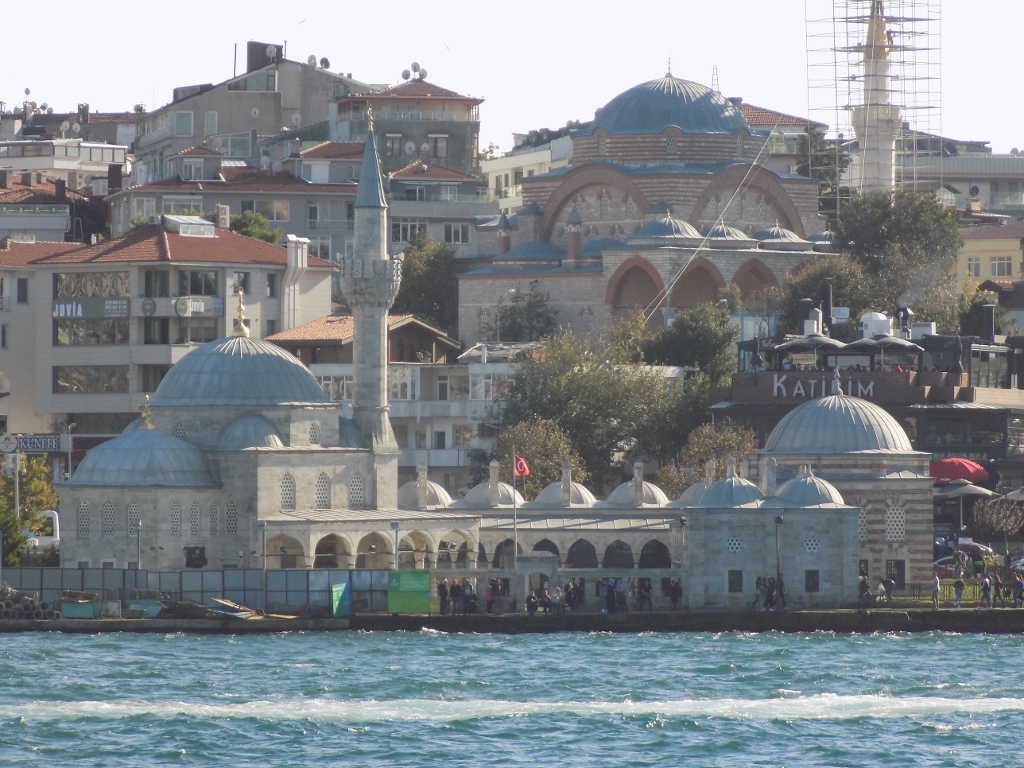 Şemsi Pasha Mosque
Şemsi Pasha Mosque
As I’ve mentioned earlier, Mihrimah Sultan, daughter of Suleiman the Magnificent and Hürrem Sultan, was an exceptionally powerful woman married to Grand Vizier Rustem Pasha. Thus she managed to build two mosques in Istanbul. I have already written about one in part 8 of my Istanbul travel stories (https://www.svudapodji.com/en/istanbul-8/) and that one is strikingly beautiful and located beside the Edirne Gate and very close to the Chora Museum. This one in Üsküdar, built between 1546 and 1548, is also very pretty and is certainly worth a visit to the Asian side in order to see it.
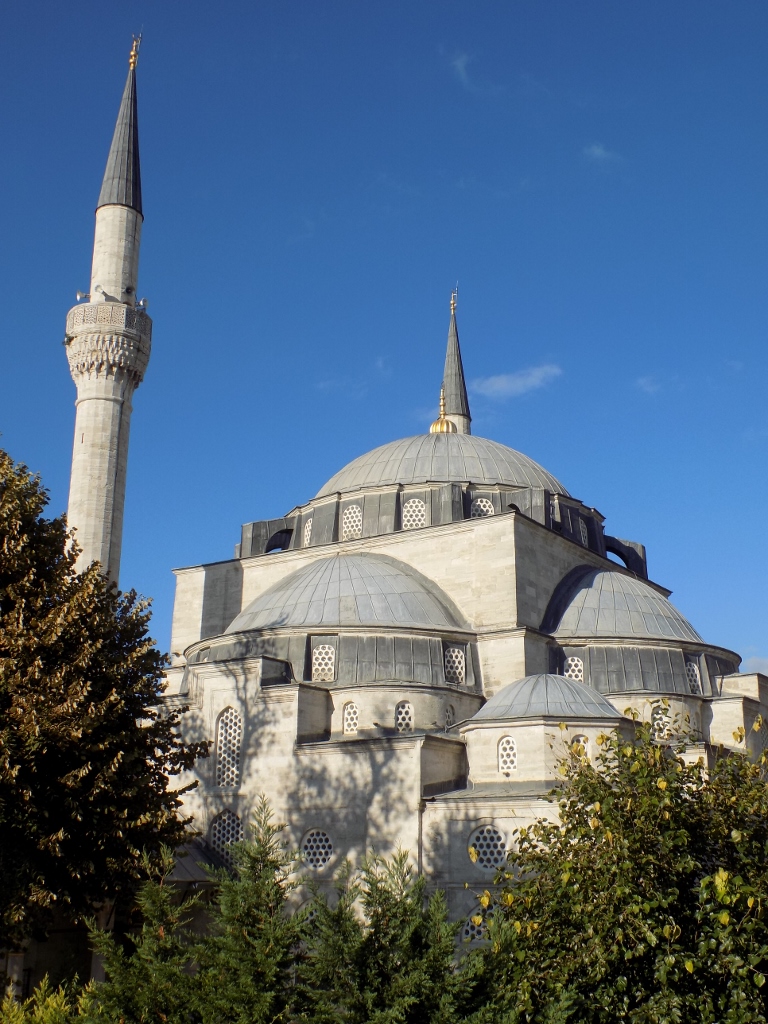 Mihrimah Sultan Mosque in Üsküdar
Mihrimah Sultan Mosque in Üsküdar
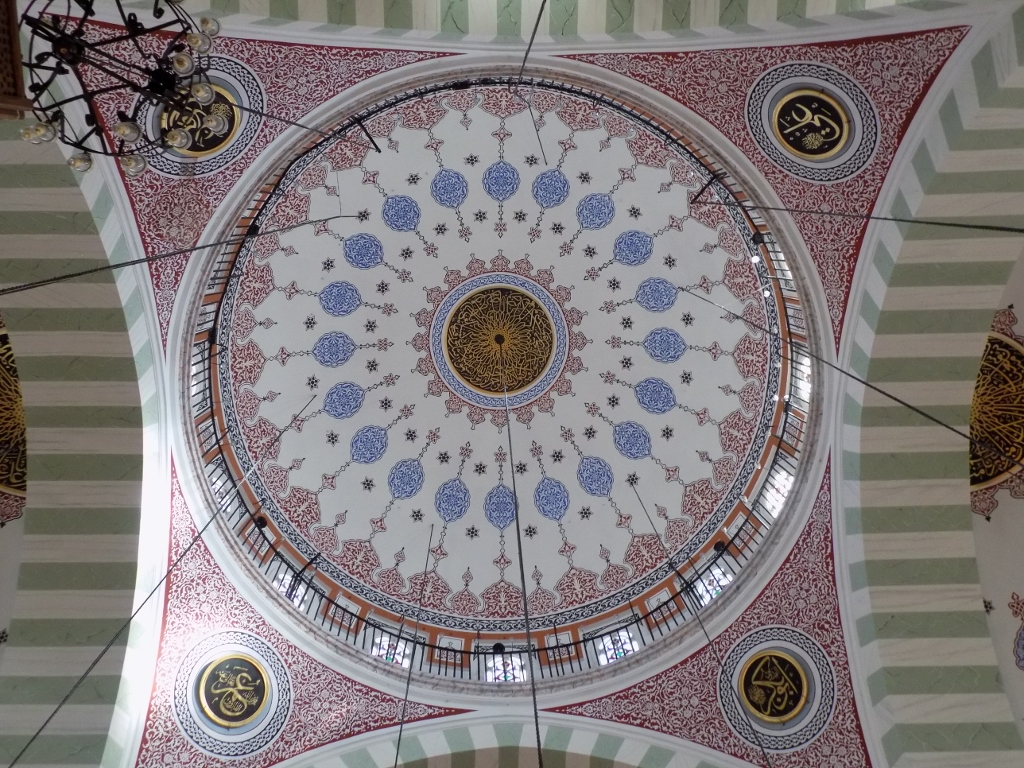 Dome of the Mihrimah Sultan Mosque in Üsküdar
Dome of the Mihrimah Sultan Mosque in Üsküdar
Especially since in the close proximity of this mosque there are a few other very interesting and picturesque places worth the visit. To start with Sneža and I first went for a coffee and cakes in one of the cafés-pastry shops near a spacious square at the shore of the Bosphorus that somehow seems to be the point around which everything happens. There is the pier of ferries coming from and going to different parts of Istanbul, there is the Mihrimah Sultan Mosque on the one side and the Şemsi Pasha Mosque on the other, there is also a third mosque, Yeni Valide Mosque, in the background and there is also the entrance into the underground railway station for the train that runs through a tunnel under the Bosphorus towards Sultanahmet quarter. Of course, there is a large local bazaar as well with its diverse goods and eatable treats. But, first we had to sit down, have those cakes, take the coffee and enjoy the view from the terrace of the café.
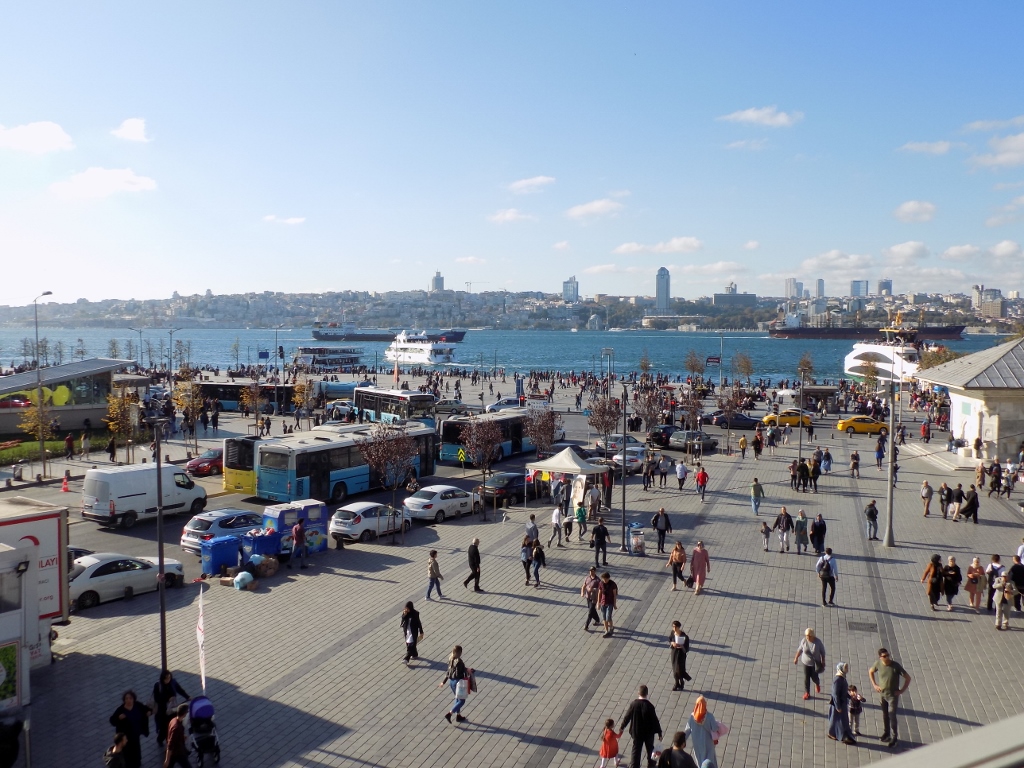 A square in Üsküdar at the shores of the Bosphorus
A square in Üsküdar at the shores of the Bosphorus
After this nice break, we went to the Şemsi Pasha Mosque that is on the opposite side of the square in relation to the Mihrimah Sultan Mosque. As I’ve mentioned, it was also designed by architect Sinan, but there are two things that are specific to this mosque. First, it is very small in comparison to all the other mosques we had visited until then and one should keep in mind that Şemsi Pasha was a prominent Ottoman nobleman who in the position of the Grand Vizier succeeded Sokollu Mehmet Pasha. The other interesting thing about it is that the mosque is located in a particularly attractive place, literally at the very shore of the Bosphorus and its forecourt is separated from the waters of the straits only by a wide paved path.
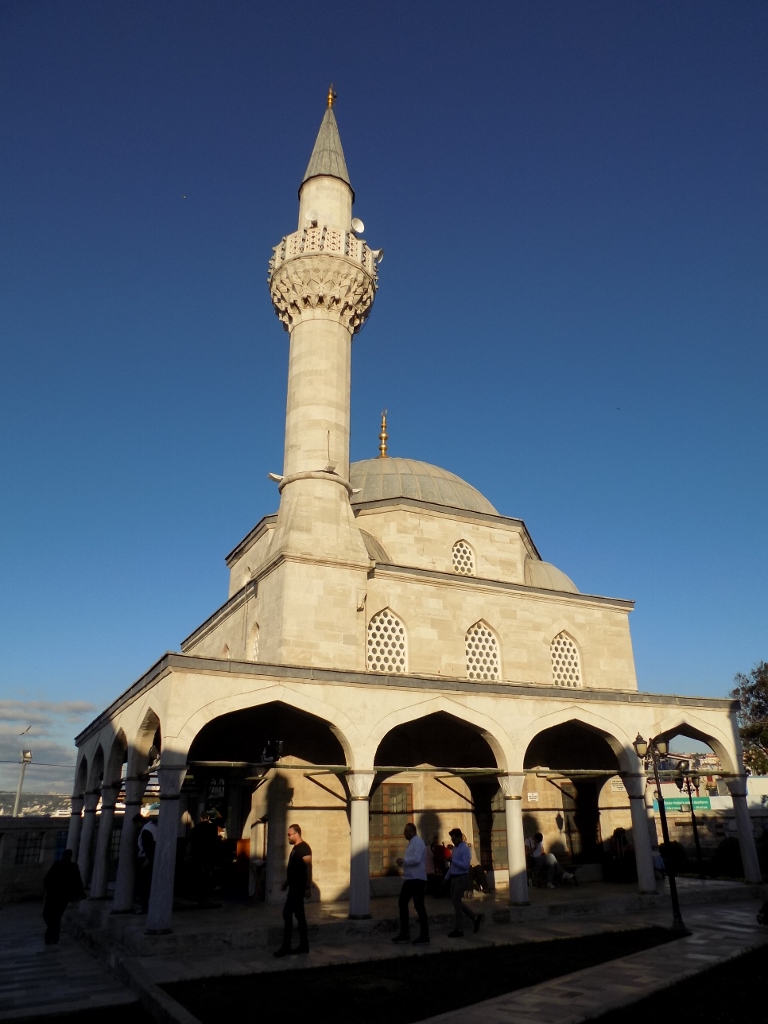 Şemsi Pasha Mosque
Şemsi Pasha Mosque
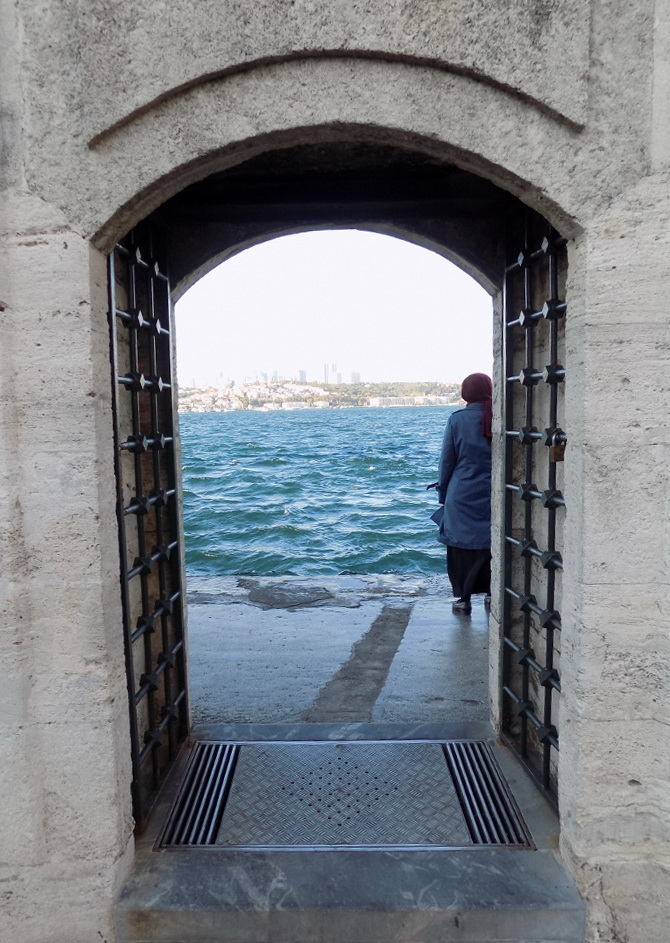 Gate leading from the forecourt of the Şemsi Pasha Mosque towards the Bosphorus
Gate leading from the forecourt of the Şemsi Pasha Mosque towards the Bosphorus
The fact that this mosque from 1580 is relatively small does not take anything away from its beauty. Somehow, I seem to have been mostly impressed by the domes in those fantastically elegant spaces they covered, so here is yet another photo on the subject.
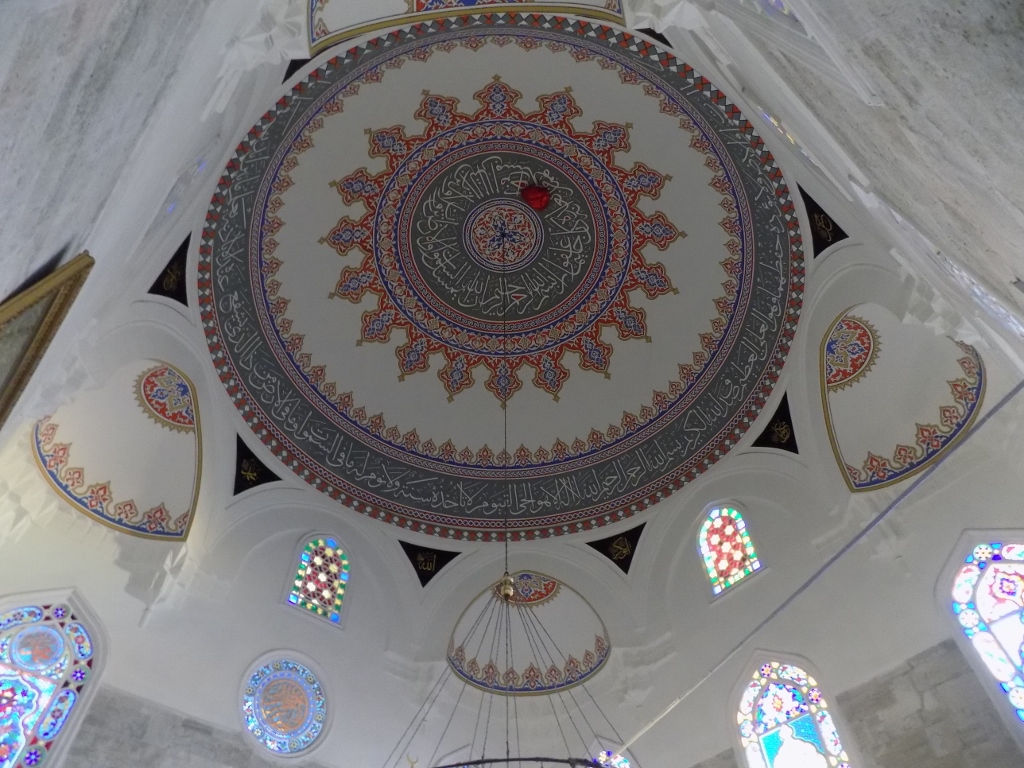 Dome of the Şemsi Pasha Mosque
Dome of the Şemsi Pasha Mosque
After a short stay at the mosque, we went out to the built shore of the Bosphorus where fishing was in its full swing.
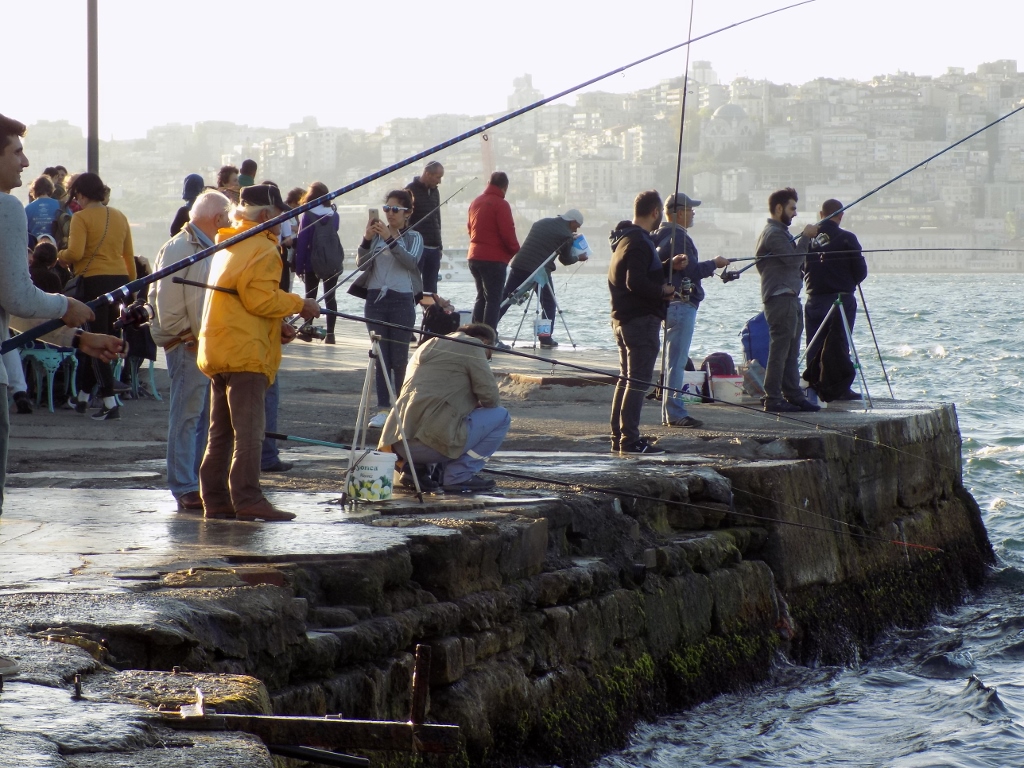 Fishers at the shore of the Bosphorus
Fishers at the shore of the Bosphorus
Of course, from there, there was also a stunning view at the entrance into the Bosphorus straits.

After this we went back to the trading part of the quarter which radiates around the spacious square I’ve talked about and there we did some small shopping, but when we got to the section where fresh fish was being sold, we could not resist but entered a restaurant that extends from the sale stands in the front section facing the street.
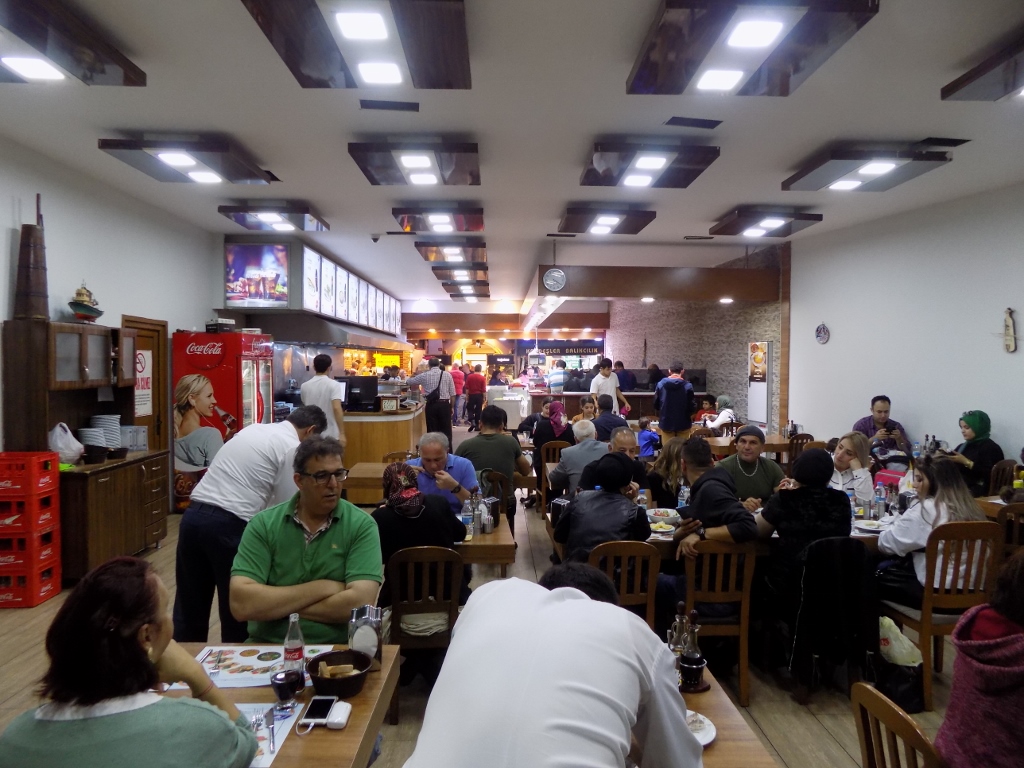 At a fish restaurant; we have already taken seats in the back
At a fish restaurant; we have already taken seats in the back
There we ordered what we wanted, but we also accepted a recommendation of a very kind waiter. Regardless of the quantity of food that will be seen in the following photos, these were after all fish dishes, so we were not disastrously full afterwards. It was just right.
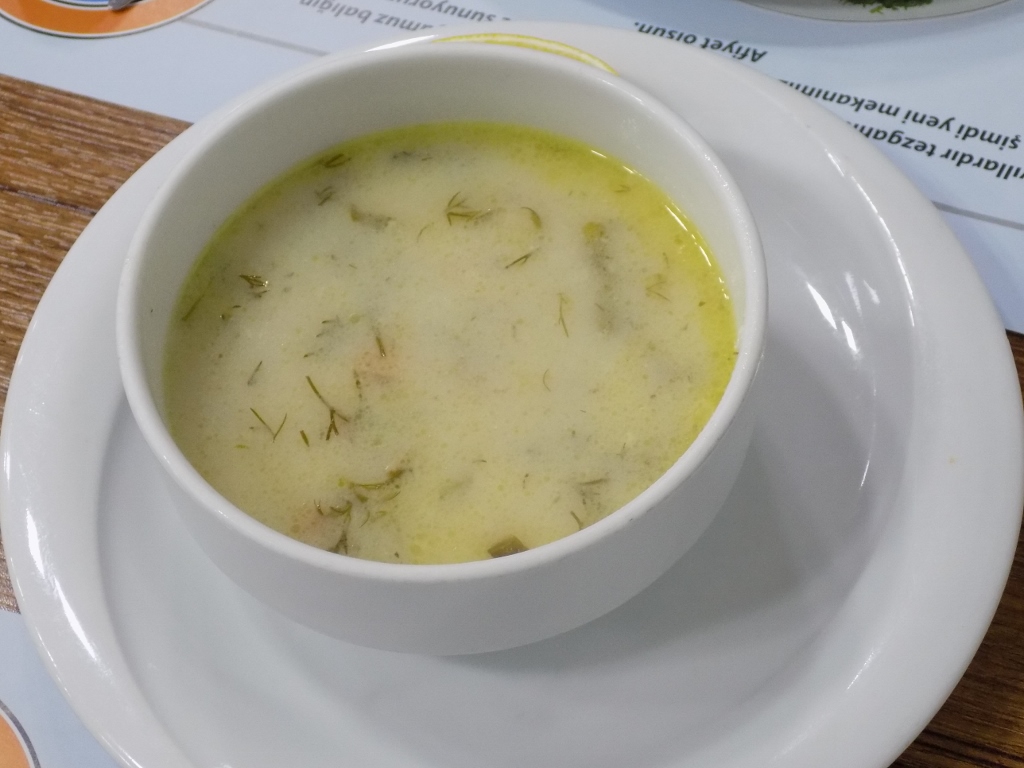 To start with – local fish soup
To start with – local fish soup
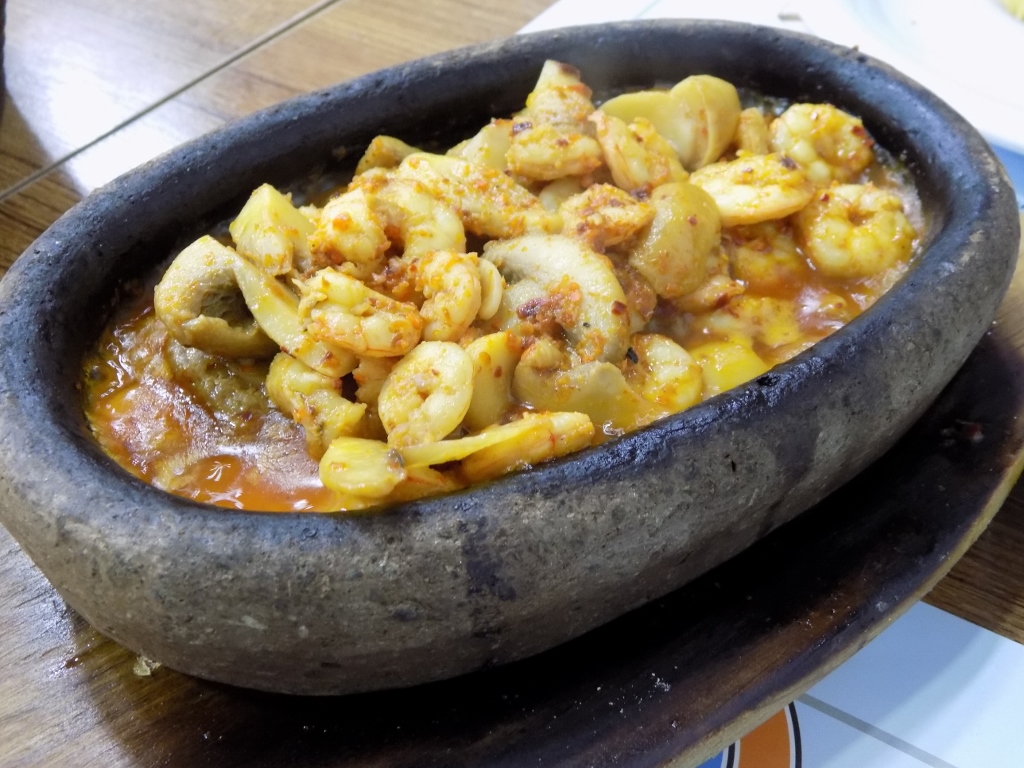 Warm starter with shrimps and mushrooms (finger-licking good!)
Warm starter with shrimps and mushrooms (finger-licking good!)
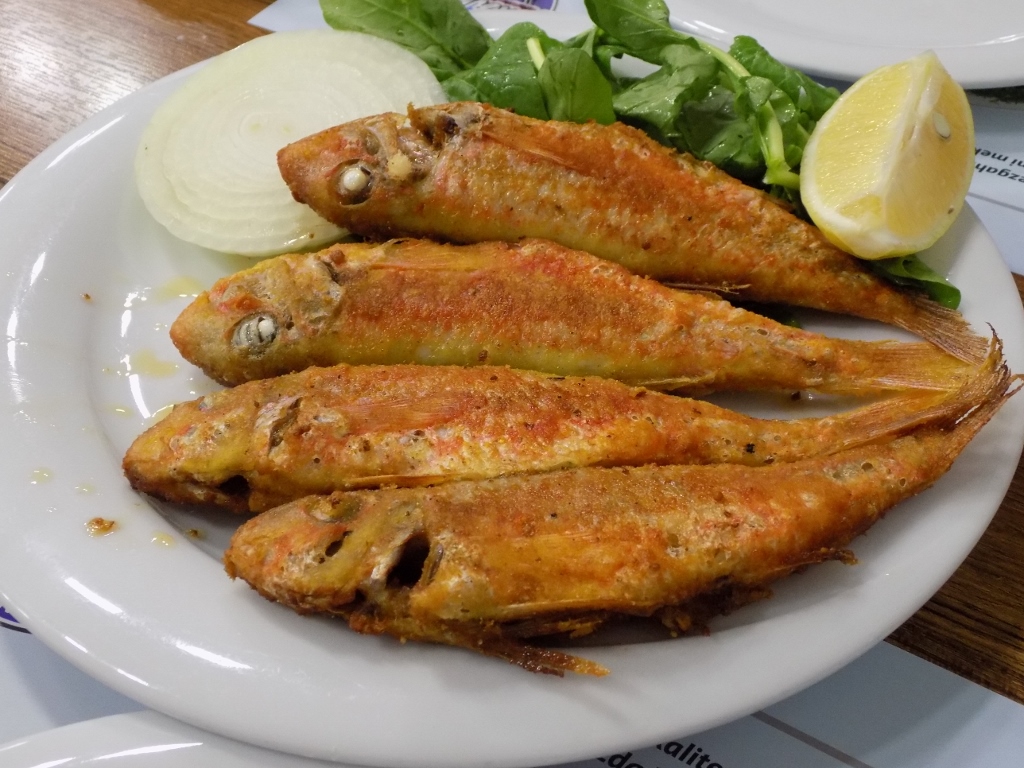 Grilled goatfish (Mullus barbatus)
Grilled goatfish (Mullus barbatus)
In the end we topped it by tea in order to make the experience more authentic.
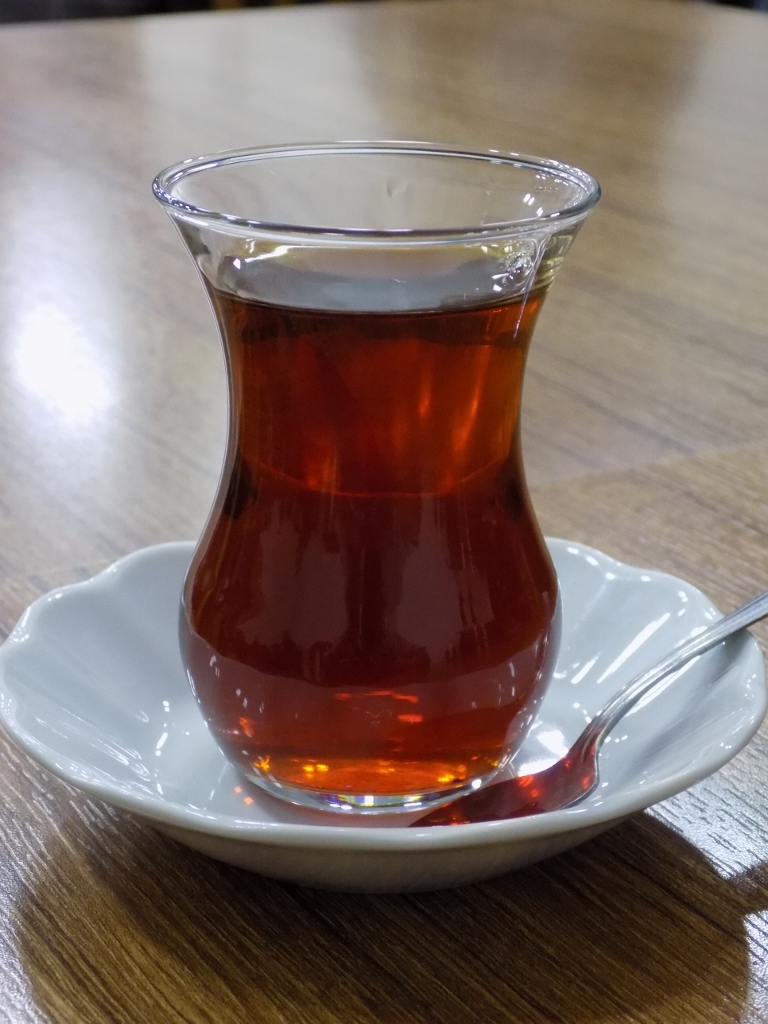 Tea at the end of the meal
Tea at the end of the meal
When we finished with our meal and headed for the exit, we could not help but watch a little what the hard-working chefs were doing and we concluded that one of the more popular dishes were fried anchovies (I think they were anchovies) that are arranged in a circle in a frying-pan and then fried. The next time I’ll order that.
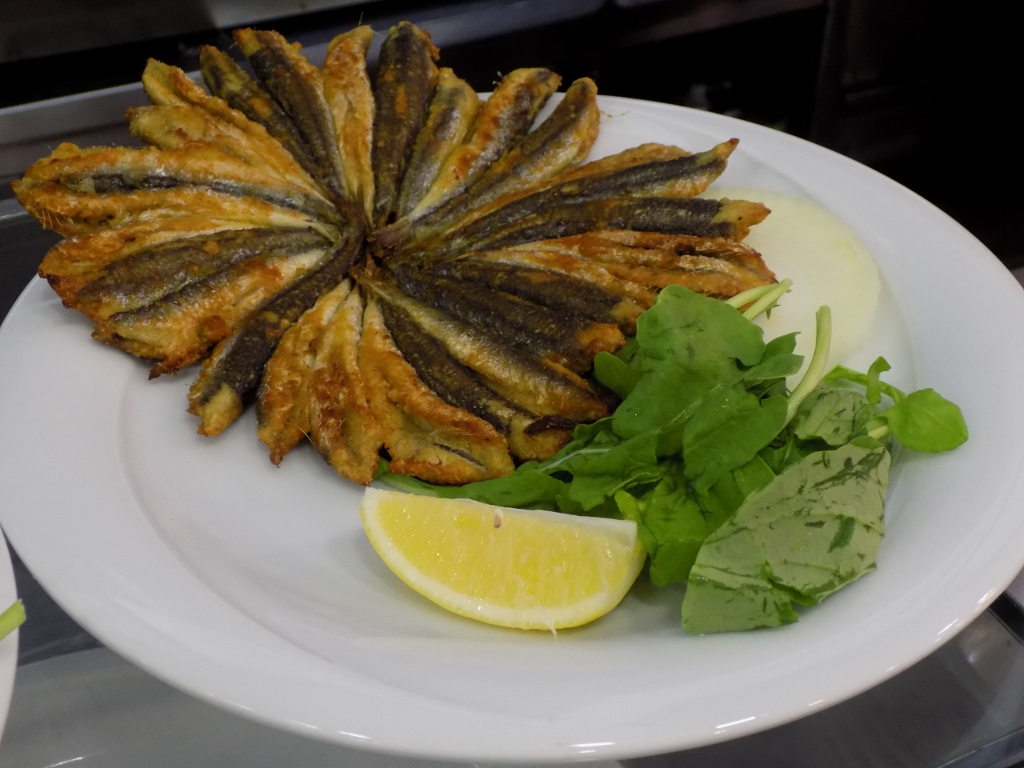 A “flower” made of fried anchovies
A “flower” made of fried anchovies
And then we walked a little bit more around the bazaar, but this time enjoying ONLY visually in fantastic Turkish sweets.
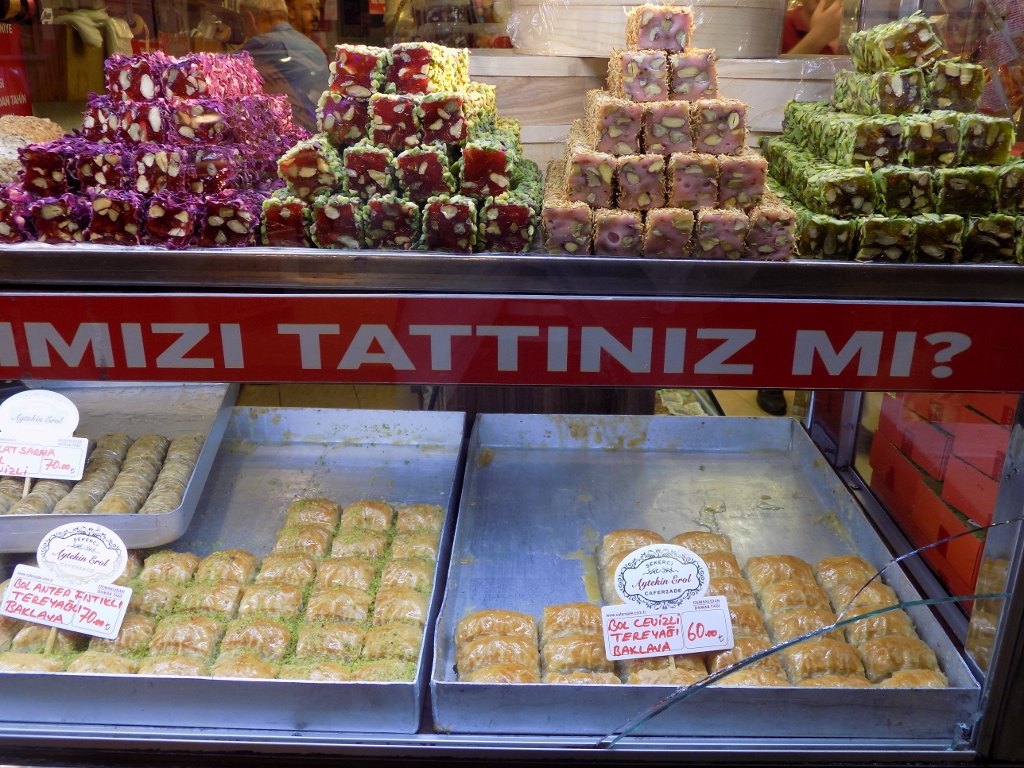 A shop-window with Turkish sweets
A shop-window with Turkish sweets
The following day we were to go back home, but we still had the entire morning free. We decided to walk over to the Grand Bazaar with the hope of buying a few more gifts. It turned out that the bazaar was closed as it was Sunday. That was quite ok. Along our way, we passed by the beautiful Nuruosmaniye Mosque from the 18th century. I must admit that we passed by this mosque a couple of times and it is certainly worth a visit, but during our stay in Istanbul this time, Sneža and I were more focused on some other mosques. But, as I like to say: “One should always leave something for the next time!”
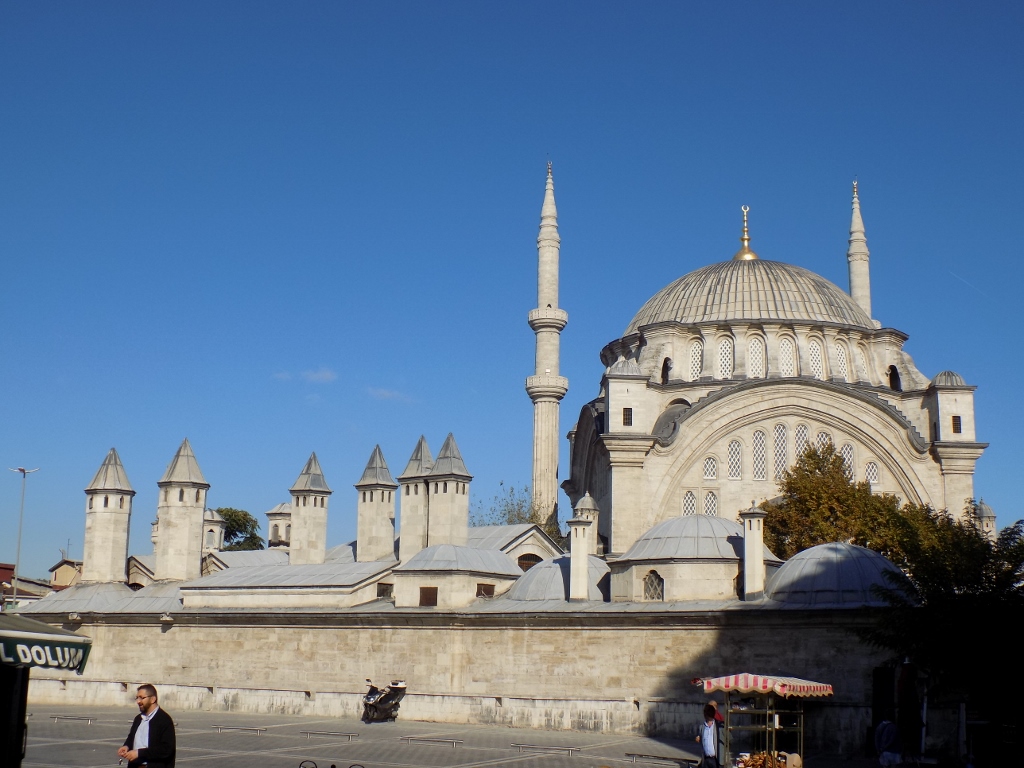 Nuruosmaniye Mosque
Nuruosmaniye Mosque
Still, our plan for the morning did include a visit to yet another mosque that had escaped us a couple of days earlier, so we headed for a slope that descends towards the Sea of Marmara. Along the way we saw a myriad of ships that were waiting their turn in the Sea of Marmara in order to sail along the Bosphorus northwards towards the Black Sea.
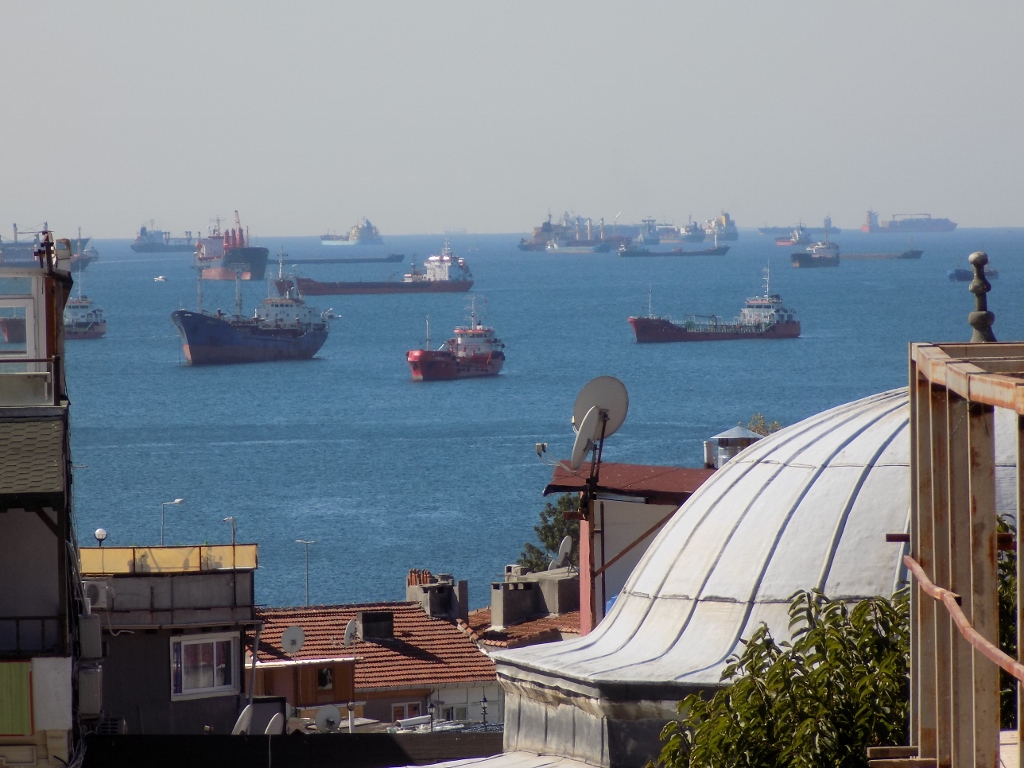 Waiting in line in the Sea of Marmara
Waiting in line in the Sea of Marmara
The mosque we were so keen on visiting is the Sokollu Mehmet Pasha Mosque which is only some five minutes on foot away from the Sultanahmet Square. It seems rather “hidden” on account of the narrow streets that surround it, as well as because of the trees.
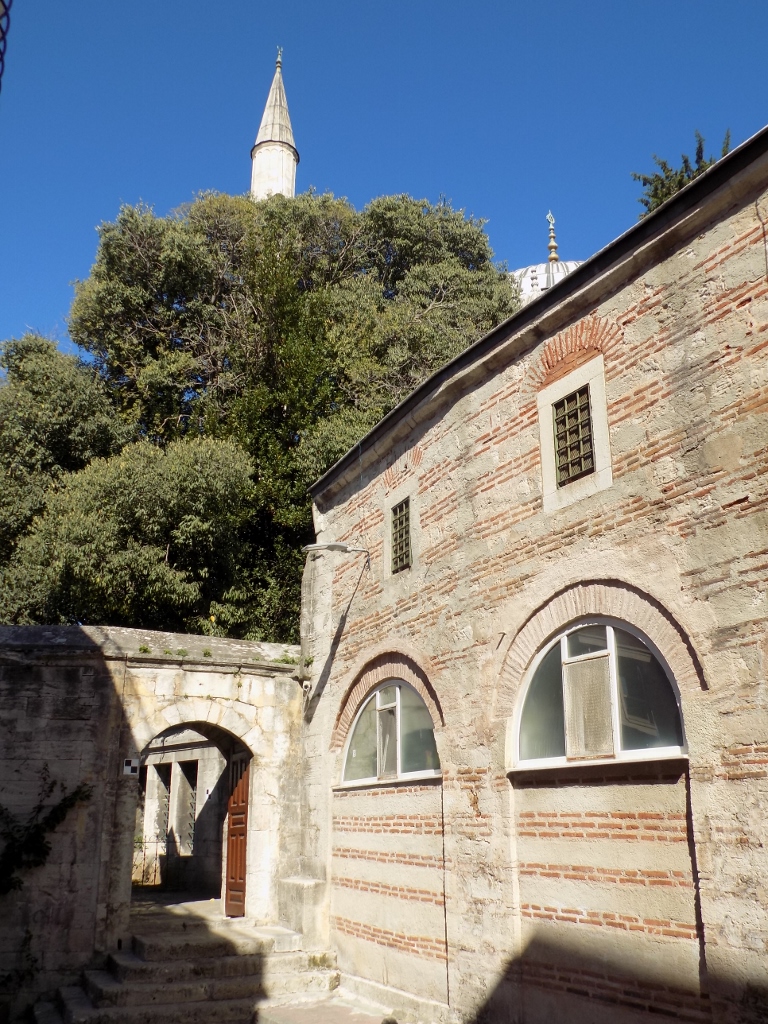 Access to the Sokollu Mehmet Pasha Mosque
Access to the Sokollu Mehmet Pasha Mosque
Still, it is not difficult to find, while I think it is absolutely worth the visit. Namely, this mosque designed by Mimar Sinan and finished in 1571 or 1572 is considered to be the most beautiful small mosque in Istanbul.
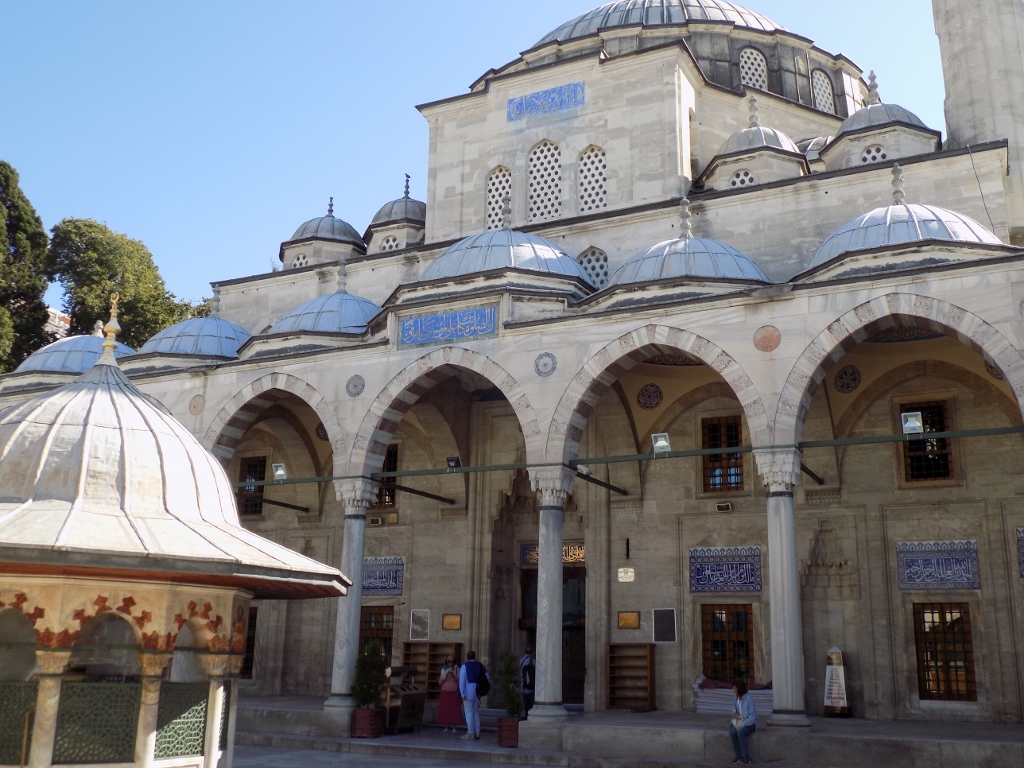 Sokollu Mehmet Pasha Mosque, the forecourt
Sokollu Mehmet Pasha Mosque, the forecourt
The first time we came here to visit it, a couple of days earlier, the man in charge of its maintenance did not let us in since he had to tidy around and vacuum-clean the carpets after the prayer. This time the two of us and a couple of visitors more did go in, but the host told us we were not allowed to take any photos. I was absolutely enthralled by the beauty of the mosque and felt sorry I would not be able to take photos and visually share my impressions with others, but then our host told us we could take a couple of photos, of course without flash (for me it goes without saying!). However, it was necessary to give some donation for the maintenance of the mosque. That was quite fine for me and it was with joy that all of us who happened to be inside did so.
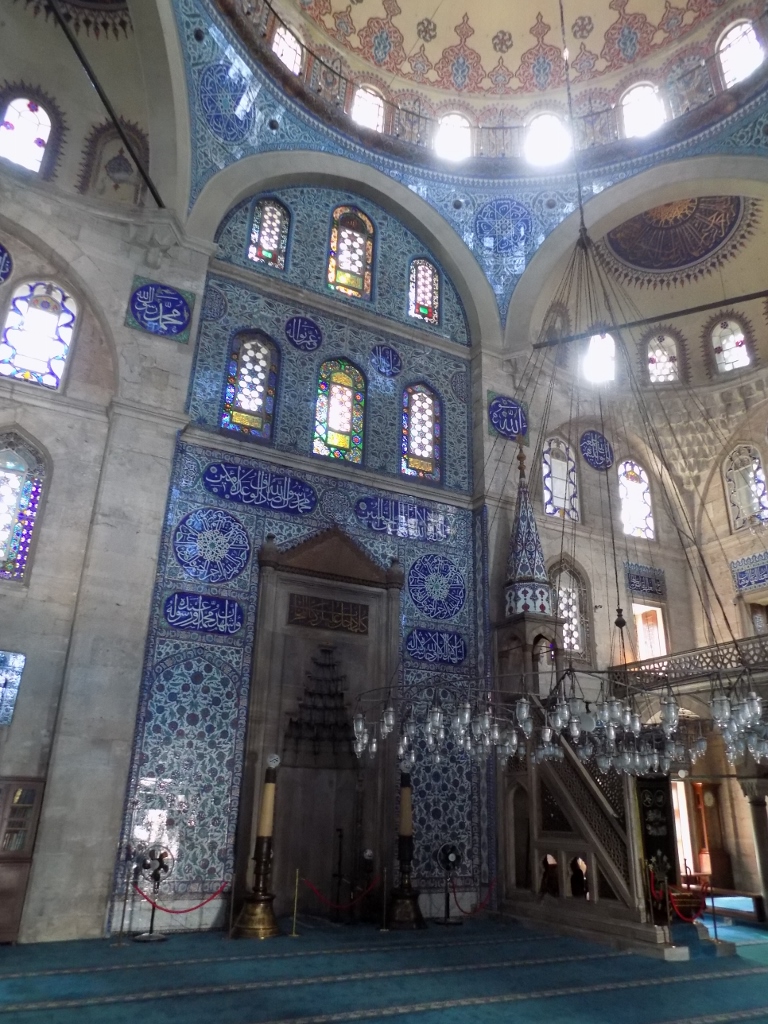 Sokollu Mehmet Pasha Mosque
Sokollu Mehmet Pasha Mosque
Finally, in these photos it may be seen that I actually regularly enjoyed the style in which the mihrab (a niche in a mosque which indicates the direction of the Kaaba in Mecca) and minbar (Islamic pulpit) were made, only I somehow took photos of the domes more often.
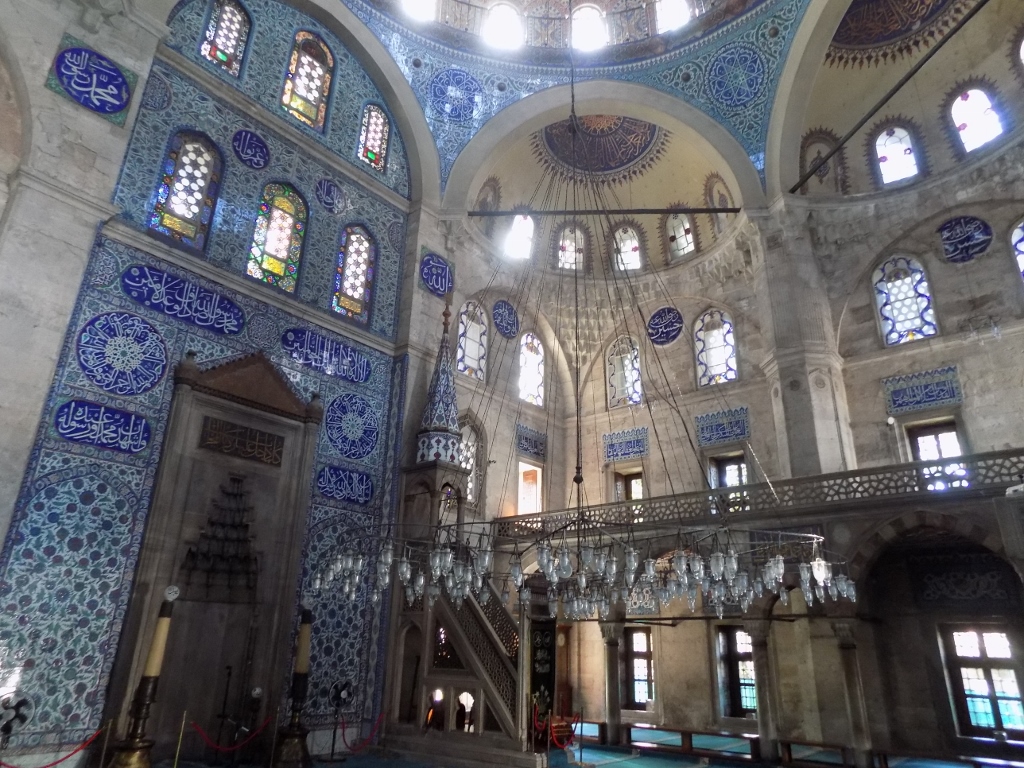 Sokollu Mehmet Pasha Mosque
Sokollu Mehmet Pasha Mosque
Still, what I found most impressive here were the Iznik tiles and I was so fascinated by them that even the dome paled in comparison.
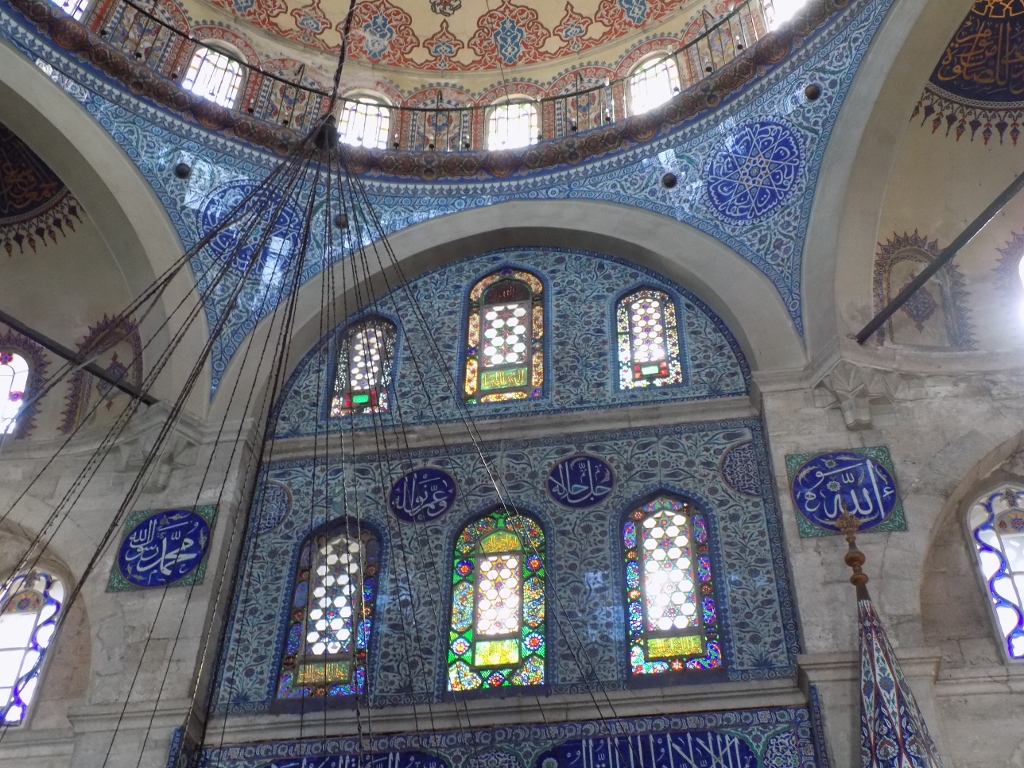 Sokollu Mehmet Pasha Mosque
Sokollu Mehmet Pasha Mosque
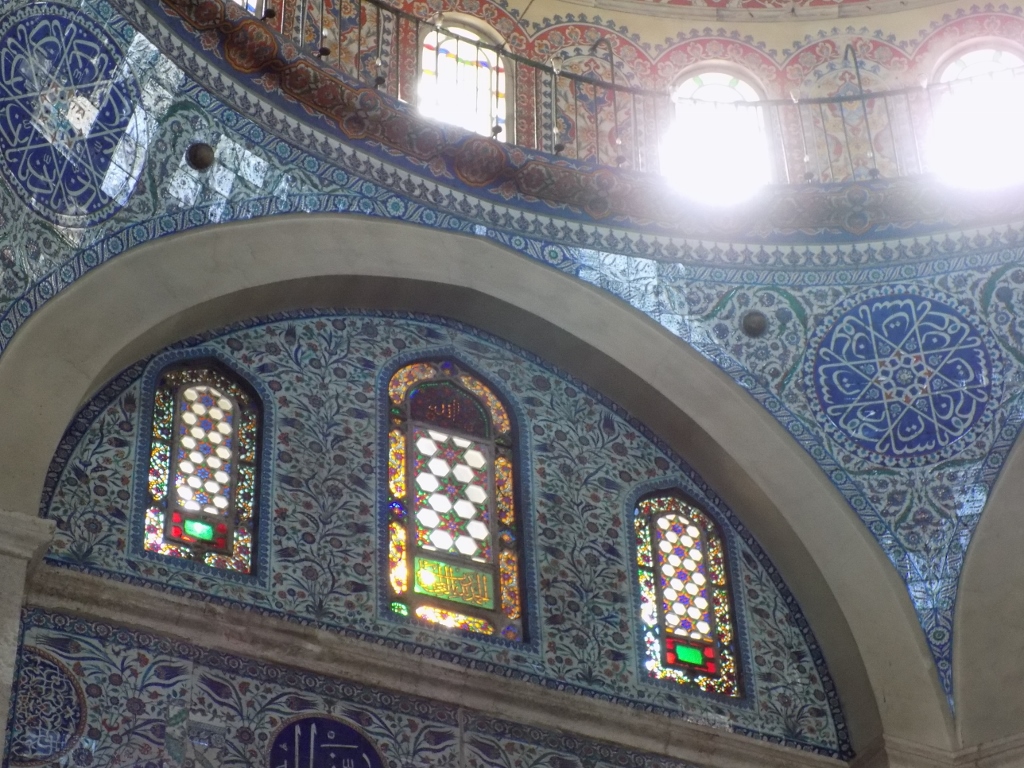 Sokollu Mehmet Pasha Mosque
Sokollu Mehmet Pasha Mosque
We stayed in the mosque for a short while and then we did have to leave and return to the hotel where our luggage was waiting for us. Before leaving for the airport, however, we did have enough time to have nice lunch and in this way our stay in Istanbul on this occasion was brought to its end.
Taking into account how fascinating Istanbul is and that it is less than two hours by plane from Belgrade, perhaps it is a little strange that I was not there earlier. But, Istanbul is not the only large, impressive and important place that is located relatively close to my place of residence which I did not visit during my numerous journeys. It is simply impossible to visit everything one wants or deems worthwhile. Especially if one has a tendency to make these visits thorough and not visit 3-4 countries in a dozen of days. I did try this once, so I know that I prefer to visit a city or a country I’m in as many details as possible. On the other hand I must admit that the sightseeing plan for this stay in Istanbul was exceptionally active, thorough and, frankly, very strenuous. And yet, already now, just a couple of months after this visit, the very thought of going back to this magnificent city is not far from my heart. And, needless to say, I already have a very clear idea as to how I would do it and what I would like to visit that time, since Istanbul has so much to offer that probably even months in this city spreading on two continents would not be too much. And I look forward to these new encounters.